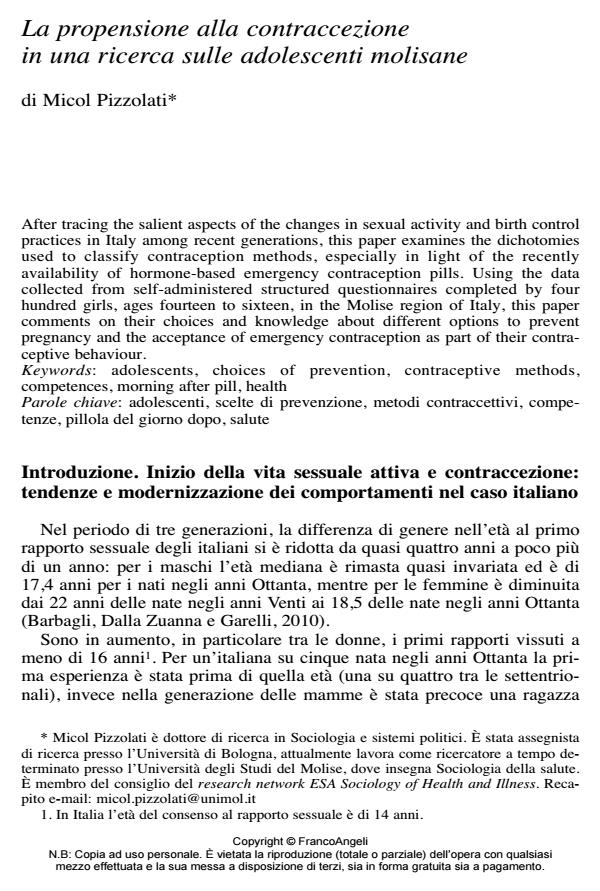La propensione alla contraccezione in una ricerca sulle adolescenti molisane
Journal title SALUTE E SOCIETÀ
Author/s Micol Pizzolati
Publishing Year 2013 Issue 2013/2
Language Italian Pages 14 P. 130-143 File size 108 KB
DOI 10.3280/SES2013-002008
DOI is like a bar code for intellectual property: to have more infomation
click here
Below, you can see the article first page
If you want to buy this article in PDF format, you can do it, following the instructions to buy download credits

FrancoAngeli is member of Publishers International Linking Association, Inc (PILA), a not-for-profit association which run the CrossRef service enabling links to and from online scholarly content.
After tracing the salient aspects of the changes in sexual activity and birth control practices in Italy among recent generations, this paper examines the dichotomies used to classify contraception methods, especially in light of the recently availability of hormone-based emergency contraception pills. Using the data collected from self-administered structured questionnaires completed by four hundred girls, ages fourteen to sixteen, in the Molise region of Italy, this paper comments on their choices and knowledge about different options to prevent pregnancy and the acceptance of emergency contraception as part of their contraceptive behaviour.
Keywords: Adolescents, choices of prevention, contraceptive methods, competences, morning after pill, health
Micol Pizzolati, La propensione alla contraccezione in una ricerca sulle adolescenti molisane in "SALUTE E SOCIETÀ" 2/2013, pp 130-143, DOI: 10.3280/SES2013-002008